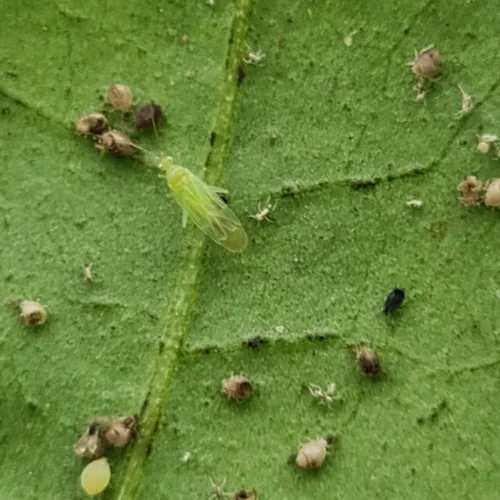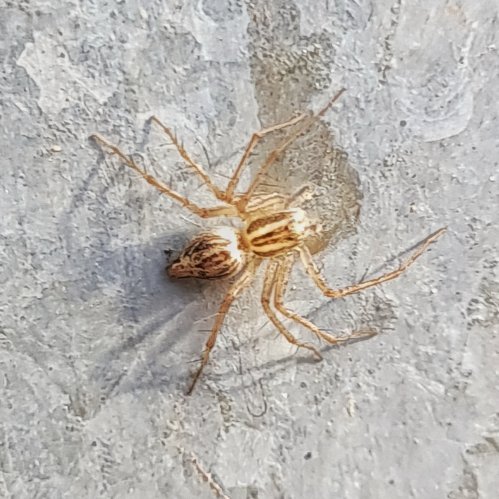
I was about to spray the Tamarillo with a jet of water because of an Aphid infestation when I decided to get the camera out, zoom right in and see what was really going on.
There were hundreds of Aphid carcasses and only a few living ones. Hmmmm though I, what’s been going on?
I found a lot of tiny, tiny parasitic Wasps doing their thing. There are many species of these Wasps, most only a millimetre or so in size. Different species prey on different insects but they all share a common way of dispatching their prey – they lay their eggs in them! When their babies hatch, they consume their still living victim from the inside! The one in the pic above seems to be making quite the morbid collection if its trophies. We mustn’t anthromorphise though…
In the second pic is something that I was thinking of squishing but then caught sight of those big eyes. Aphids don’t look at you like that, it is more of a Mantis thing. I checked my sources and, sure thing, it is a predatory insect, a Macrolophus (probably Macrolophus pygmaeus) – one of the good guys that munches on Whitefly (Aleyrodidae). Hooray for it and hooray that my squishing fingers weren’t a bit faster…

As I was looking, I got a visit from an African import, a bright Orange Ichneumon Wasp, Ctenochares bicolorus, who’s favourite food seems to be the Green Looper caterpillar (Chrysodeixis eriosoma) and that may be right as I’ve found a few on this plant before and found another, already at their pupal stage, as I continued searching. Maybe they have baby wasps already inside of them?

More looking rewarded me with several tiny spiders -a Jumping Spider of the Genus Colonus. I love to see these little critters around the place. They are so quick and the markings on their head look like faces with a moustache!
A little later, I found a Striped Lynx Spider (Oxyopes salticus) as well. If you’re wondering why the background of these spider pics is silver, it’s because they both made a leap and ended up an an adjacent rain tank before I could get a good shot. I’m glad that they did, though, it makes an excellent background.


The cutest find of the day was a Marbled Gecko (Christinus marmoratus). Who doesn’t love these little native Australia guys and gals – they’re just too cute! Having a high level predator such as this is a good sign in a garden, it means that the garden ecosystem is diverse and robust, with enough prey to support predation.

I’ve always been aware of the need for predators and that, in a food garden, they do a lot of the pest control. It is only in the last year though that I have really focused on learning about them. As a result, I no longer use, even organic pesticides, beyond the occasional use of home made White Oil (made from organic vegetable oil and Earth friendly liquid soap, of course), a jet of water or a sprinkle of diatomaceous earth because the pesticides and other methods kill off the predators too.
We need to keep as wide a range of insects and other critters around as we can because biodiversity is being lost (read ‘killed off’) at a great rate of knots, a situation that will get even worse as the climate crisis deepens in its effects. Nurturing them in your garden is the best way that you can help.
I’ve written about attracting insect biodiversity to your garden on other occasions but I reckon it’s worth writing another post about it so that I can add in all that I’ve learned in the last year. Actually, I think I’ll write a little pdf or e-book on the topic that you can download for reference.
What do you think, is that something you’d like to see?








